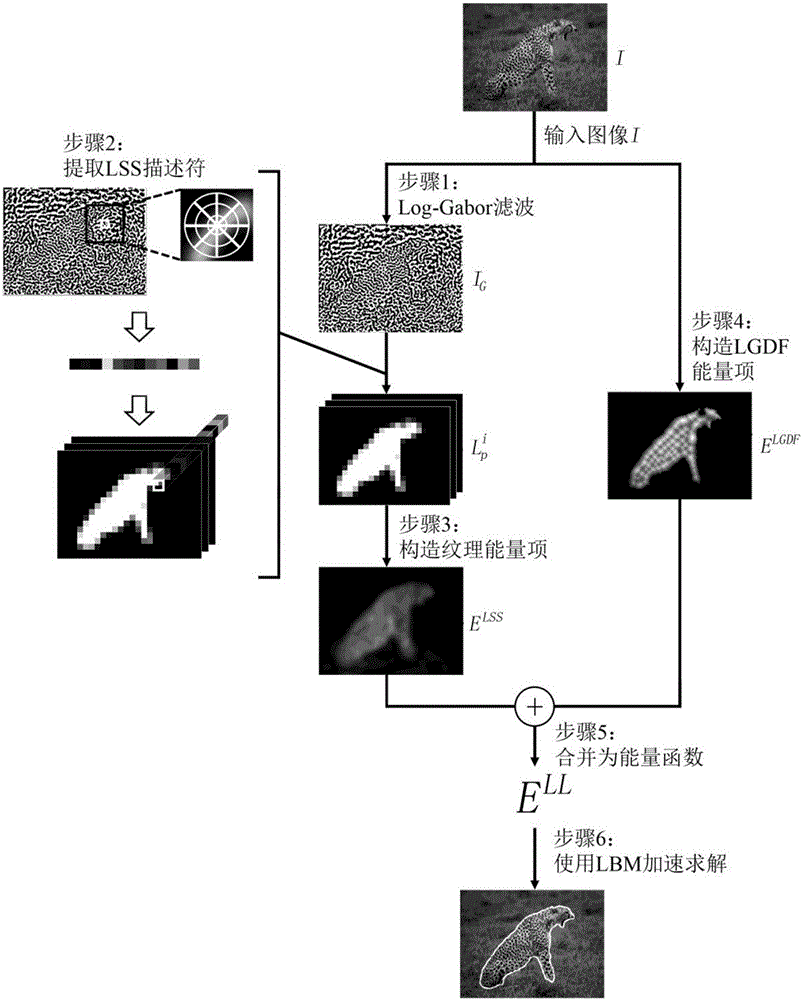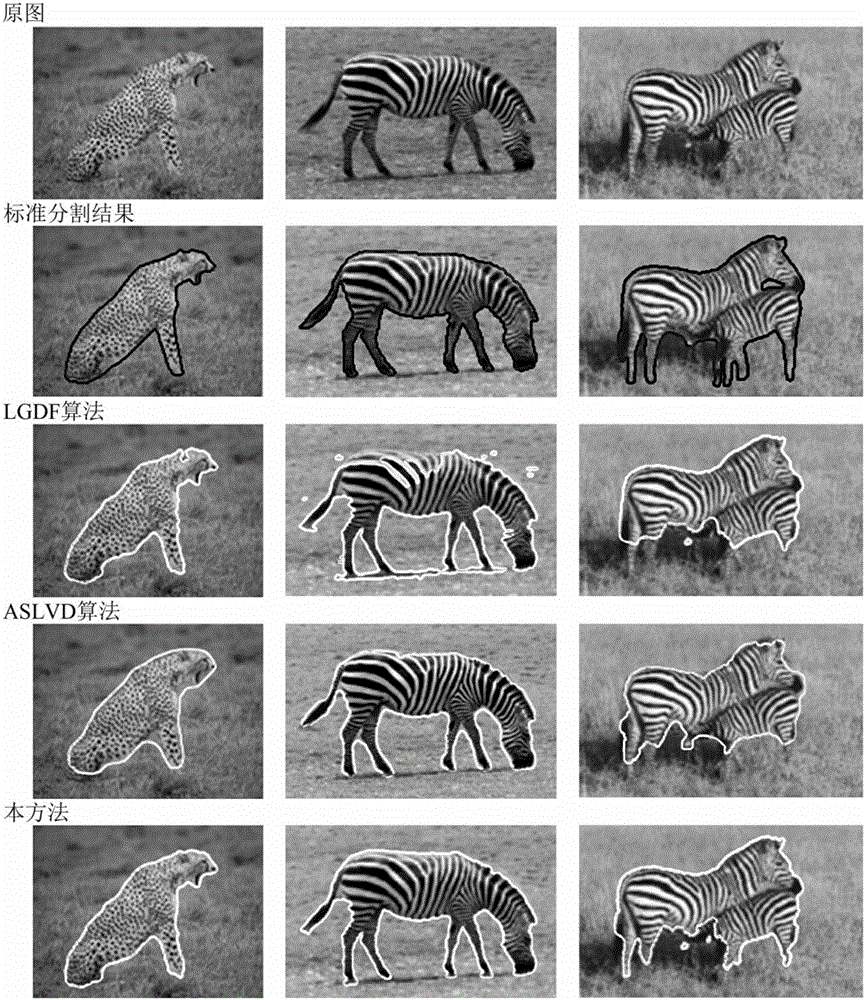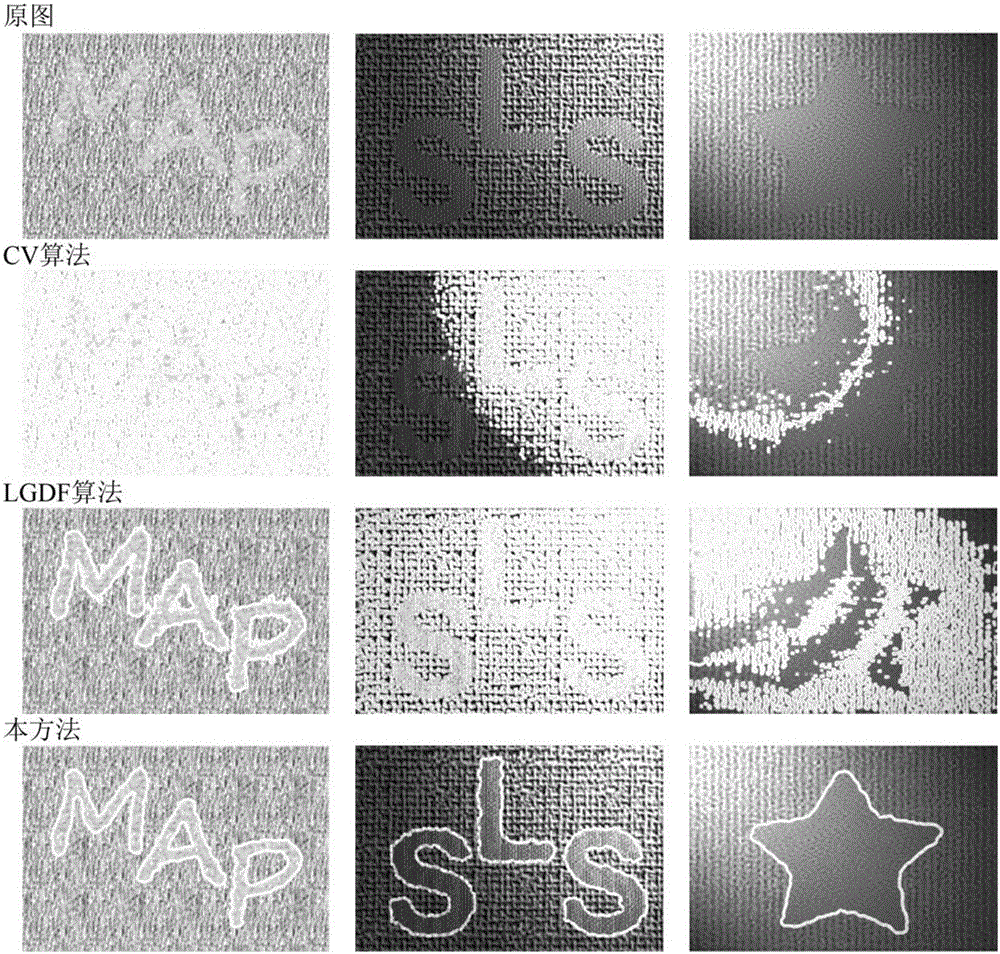Texture image segmentation method based on level set model
A texture image, level set technology, applied in image analysis, image enhancement, image data processing and other directions, can solve the problems of uneven grayscale, difficult texture image segmentation, noise sensitivity, etc.
- Summary
- Abstract
- Description
- Claims
- Application Information
AI Technical Summary
Problems solved by technology
Method used
Image
Examples
Embodiment 1
[0096] This embodiment describes the process of applying the "level set model-based texture image segmentation method" of the present invention to the image "Leopard1.bmp":
[0097] figure 1 For the algorithm flow of this method and this embodiment, from figure 1 It can be seen that the method includes the following steps:
[0098] Step A: Log-Gabor filtering;
[0099] Specifically in this embodiment, the input image I is "Leopard1.bmp", and Log-Gabor filtering is performed on I to obtain I G ;
[0100] In this embodiment, the Log-Gabor parameter is taken as: the filter frequency parameter σ f =k / w 0 =0.65, the angle parameter σ θ =0.52, the direction parameter θ is 0, and the wavelet scale S is 3;
[0101] Step B: extracting the LSS descriptor;
[0102] The specific process can refer to step 2. The area size N is set to 41, the small block size n is set to 5, and the number of blocks M is set to 40 (ρ is divided into 4 intervals, and θ is equally divided into 10 interva...
Embodiment 2
[0113] This embodiment specifically describes the segmentation results obtained by performing steps 1 to 6 of the present invention on 6 texture images (the segmentation results are represented by white lines), and compares them with existing image segmentation methods.
[0114] figure 2 and image 3 They are the segmentation results of 3 texture images and 3 texture images with noise / grayscale unevenness. These 6 texture images are the input images in step 1;
[0115] figure 2 Divided into 5 rows and 3 columns, each row represents the result obtained by using an image segmentation method (the first two rows are the standard results of the original image and manual segmentation), and each column represents a different original image. Among them, the comparison methods are: LGDF algorithm, ASLVD algorithm and this method; there are 3 original images, from left to right: "Leopard1.bmp", "Zebra1.bmp" and "Zebra2.png";
[0116] image 3 Divided into 4 rows and 3 columns, ea...
Embodiment 3
[0126] This embodiment is a comparison between the number of curve evolution iterations required by the method for image segmentation and the number of iterations when the LBM acceleration unit is removed. In both cases, the number of iterations required to process different images are shown in Table 2:
[0127] Table 2 Comparison of the number of iterations between this method and the case of removing the LBM unit
[0128]
[0129] It can be seen that when the LBM acceleration unit is removed, the number of iterations increases significantly; on the 6 images, the efficiency after acceleration is 2 to 6 times higher than that before acceleration, which shows the effectiveness of LBM acceleration. The introduction of LBM significantly reduces the number of iterations of curve evolution in this method, reduces the time required for evolution, and improves the efficiency of image segmentation.
PUM
 Login to View More
Login to View More Abstract
Description
Claims
Application Information
 Login to View More
Login to View More - R&D
- Intellectual Property
- Life Sciences
- Materials
- Tech Scout
- Unparalleled Data Quality
- Higher Quality Content
- 60% Fewer Hallucinations
Browse by: Latest US Patents, China's latest patents, Technical Efficacy Thesaurus, Application Domain, Technology Topic, Popular Technical Reports.
© 2025 PatSnap. All rights reserved.Legal|Privacy policy|Modern Slavery Act Transparency Statement|Sitemap|About US| Contact US: help@patsnap.com



